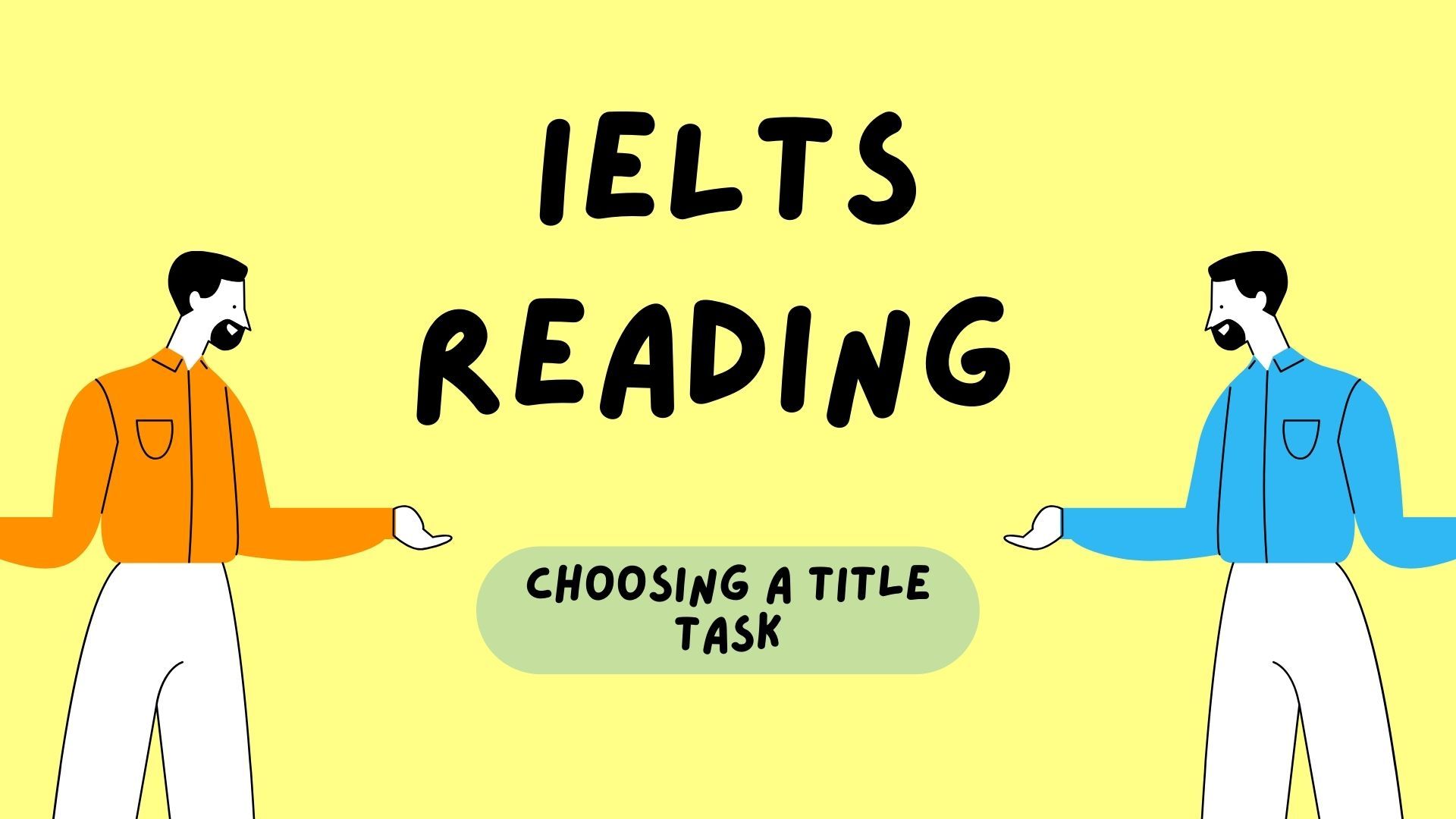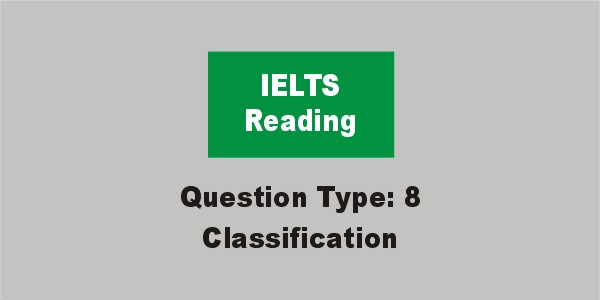Free Course (Reading) Module
Lesson 9: Choosing a Title

The IELTS reading test includes a variety of question types, one of which is the "Choosing a Title" question. This question type requires you to read a passage and then select the best title from a list of options that accurately reflects the main idea or theme of the passage.
The purpose of this question is to test your ability to identify the main idea of the passage, and to summarize it in a concise and accurate way. It also assesses your understanding of the organization and structure of the passage, and your ability to distinguish between important information and minor details.
To answer this question successfully, it is important to read the passage carefully, paying close attention to the main idea and the key points that support it. You should also pay attention to the language used in the title options, and choose the one that best captures the main idea of the passage without being too specific or too general.
Overall, the Choosing a Title question is an important part of the IELTS reading test, as it assesses your ability to understand and summarize written text in a clear and concise manner. It is important to practice this question type and develop your skills in order to perform well on the IELTS reading test.
How to solve the module
Here is a step-by-step guide on how to solve an IELTS reading Choosing a Title question:
Step 1: Skim the passage
Before you start answering any questions, it's important to skim the passage quickly to get an overall understanding of its main idea, topic and structure. Take note of any headings, subheadings or highlighted keywords that may give you clues to the passage's main topic.
Step 2: Read the title options
Read the list of title options carefully. Each option will be a brief phrase or sentence that tries to capture the main idea of the passage. Make sure to read them all carefully and compare them with the information you gathered from your skim reading in Step 1.
Step 3: Look for clues in the passage
Re-read the passage more carefully and look for specific keywords or phrases that directly relate to the main idea of the passage. This will help you to eliminate any title options that are too vague or too specific. Pay close attention to the introduction and conclusion of the passage, as they often contain the main idea and key points.
Step 4: Compare the remaining titles and see which one best captures the main aim or message of the passage. Look for clues in the introduction and conclusion sentences, as well as the overall tone and scope of the passage. For example, if the passage gives an overview of coffee’s popularity, history and benefits, you can choose a title that reflects that, such as “Coffee - a popular hot drink”.
Step 5: Choose the best option
After analyzing the title options and re-reading the passage, choose the title option that best reflects the main idea of the passage. Make sure the title is not too specific, as it should accurately reflect the main idea without being too detailed. Also, ensure that it's not too general, as it should clearly differentiate the passage from other topics.
Step 6: Check your answer
Double-check your answer before moving on to the next question. Make sure that your chosen title option accurately reflects the main idea of the passage, and that it is a reasonable summary of the text.
By following these steps, you can effectively solve the IELTS reading Choosing a Title question and demonstrate your ability to understand and summarize written text in a concise and accurate manner.
Example of the module
Passage: A
The human brain is a remarkable organ. It controls all the functions of the body, receives and interprets information from the outside world, and embodies the essence of the mind and soul. Intelligence, creativity, emotion, and memory are a few of the many things governed by the brain. Protected within the skull, the brain is composed of the cerebrum, cerebellum, and brainstem. The brain receives information through our five senses: sight, smell, touch, taste, and hearing - often many at one time. It assembles the messages in a way that has meaning for us, and can store that information in our memory. The brain controls our thoughts, memory and speech, movement of the arms and legs, and the function of many organs within our body. The central nervous system (CNS) is composed of the brain and spinal cord. The peripheral nervous system (PNS) is composed of spinal nerves that branch from the spinal cord and cranial nerves that branch from the brain. The PNS connects the CNS to sensory organs, other organs of the body, glands, blood vessels and muscles.
Choose the best title for this passage from the titles below (A-D)
A. The human brain and its functions
B. The human brain and its structure
C. The human brain and its senses
D. The human brain and its diseases
Expert tips for the module
Here are some tips and tricks for choosing a title for IELTS reading:
- Read the whole passage first before choosing a title.
- Look for the main idea of the passage.
- Look for repeated words or phrases in the passage.
- Look for words that describe the tone of the passage.
- Look for words that describe the purpose of the passage.
Next Lessons
Previous Lessons
Speaking Services
starts from $1
culpa id cupidatat et dolore est sint voluptate irure incididunt tempor ex est labore dolor commodo amet voluptate qui incididunt cillum occaecat cupidatat
Assess NowWriting Services
starts from $1
culpa id cupidatat et dolore est sint voluptate irure incididunt tempor ex est labore dolor commodo amet voluptate qui incididunt cillum occaecat cupidatat
Assess Now


